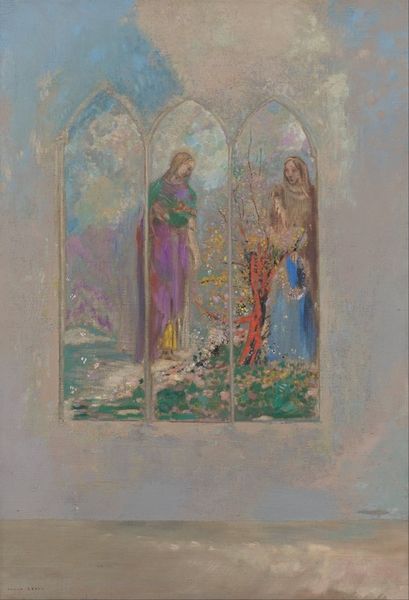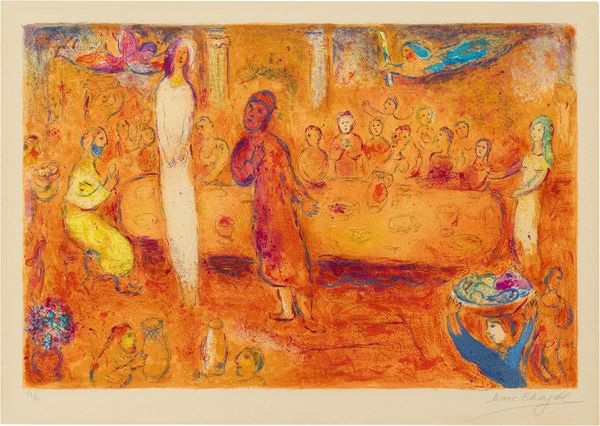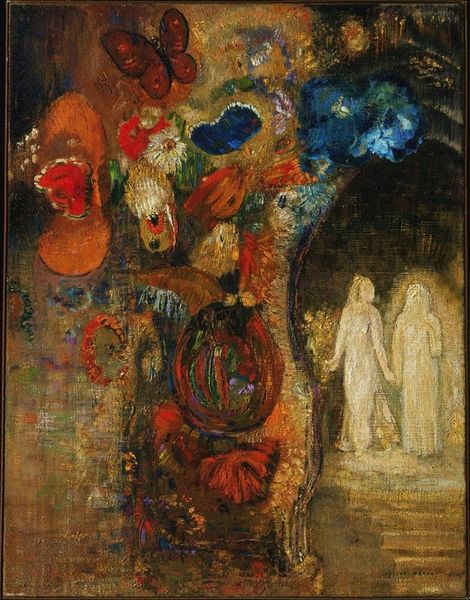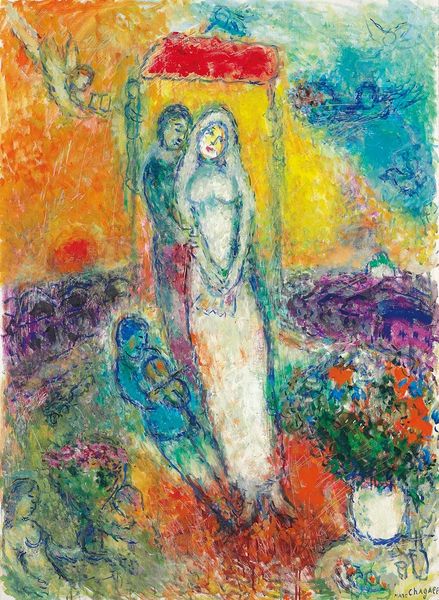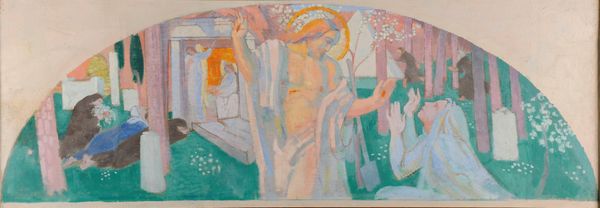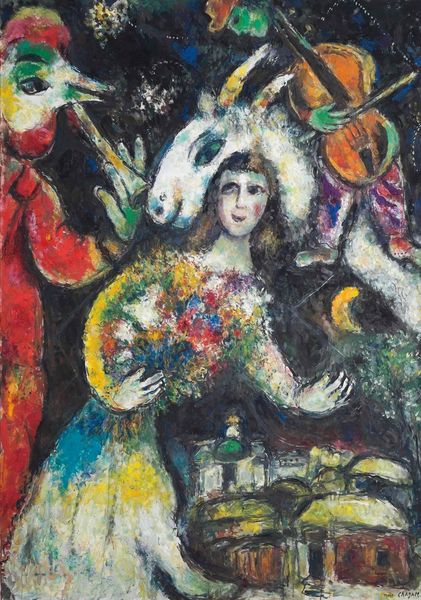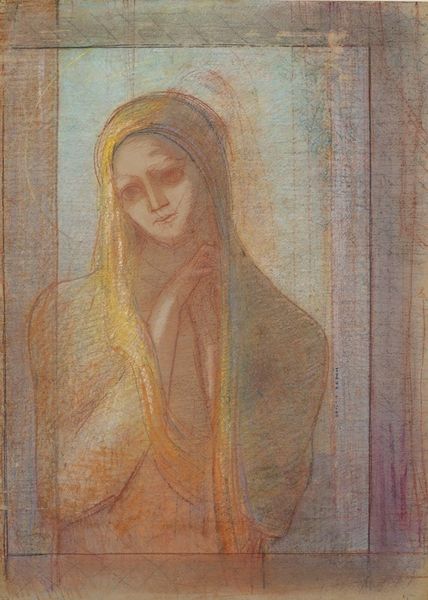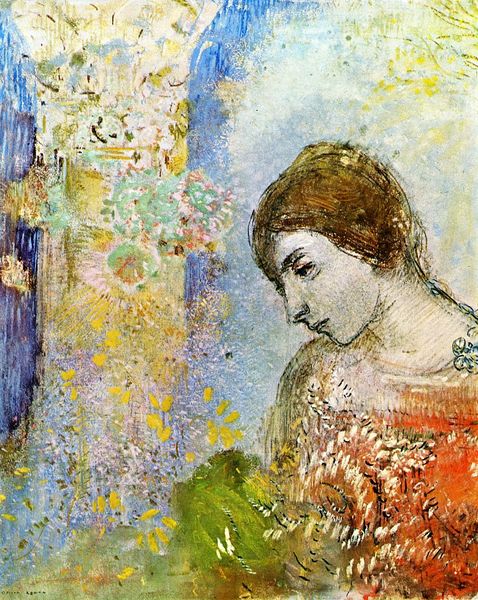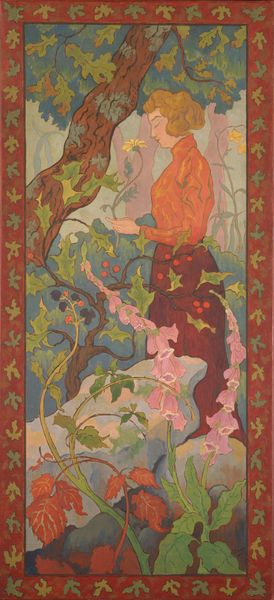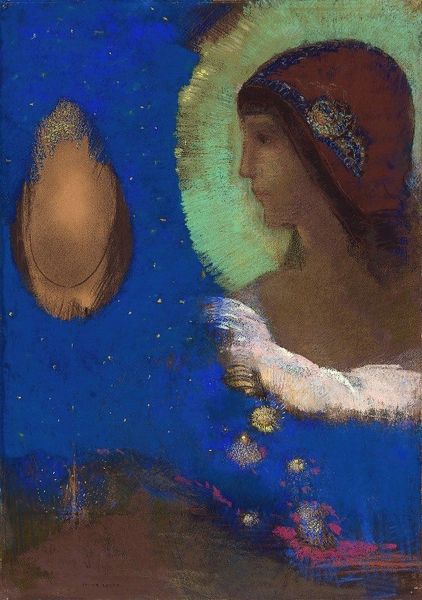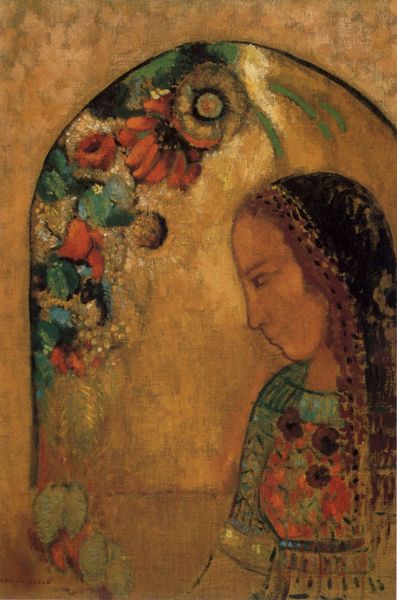
tempera, painting, impasto
#
portrait
#
tempera
#
painting
#
landscape
#
impasto
#
intimism
#
symbolism
Copyright: Public Domain: Artvee
Editor: This is "Woman in a Gothic Arcade; Woman with Flowers" by Odilon Redon, made in 1905, using tempera. It’s really striking how the colors create a dreamlike effect. What are your initial thoughts when you look at the structure and colors used in this piece? Curator: A fascinating orchestration of form and color. The juxtaposition of the two female figures immediately calls attention to the painting's structural dichotomy. We have one figure situated firmly within the architectural structure, defined by strong vertical lines and more saturated color. How does this compare to the wispy portrait, barely discernible from the pastel colors behind her? Editor: It feels like there's a contrast between reality and imagination. One seems anchored, and the other ethereal. Are you suggesting that Redon might be exploring the formal contrasts between states of being? Curator: Precisely! The impasto technique and the symbolism within the floral elements enhance the emotional weight of the composition. How does the painting prompt a deeper reflection on interiority, or subjective experience in relation to the "real world" depicted? Editor: The contrasting styles and the ethereal portrait definitely push me to consider an inner, more imaginative realm, especially given that her inner thoughts are being projected outward as the second portrait. It’s interesting how the figures engage in a dialogue across planes of reality. Curator: Indeed. Through analyzing color and line, we perceive Redon's formal innovations in conveying the psychology of visuality. It highlights how a composition can signify emotional complexities via color and juxtaposition. Editor: I learned how close examination of form can reveal more than just aesthetic beauty; it can unpack emotional content and philosophical inquiry. Curator: Likewise. It reaffirms the power of visual analysis in discerning deeper truths and interpretations of artworks.
Comments
No comments
Be the first to comment and join the conversation on the ultimate creative platform.
